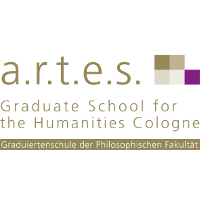Dr. Noé Michael
About
- 2007 bis 2013 Studium der Klassischen, Byzantinischen und Provinzialrömischen Archäologie sowie Museumstudien an der Universitäten Fribourg, Bern, Jerusalem und Leiden.
- 08/2013 Master of Arts in Archäologie, Universität Leiden
- Seit 01.2015 Archäologe bei der israelischen Antikenbehörde, Leitung von Ausgrabungen und Surveys, hauptsächlich in der Negev Wüste, Hellenistisch bis Spätislamische Stätten.
- 09.2018 bis 09.2021 Promotionsstipendium der israelischen Antikenbehörde
- 05.2022 Promotion an der Ben-Gurion-Universität in Be’er Sheva mit einer Arbeit zu „Settlement patterns in the Northern Negev from the Hellenistic through the Early Islamic period“
- 2022-2023 Assoziierter Fellow am W.F. Albright Institute of Archaeological Research, Jerusalem.
- Seit 07.2023 Post-Doc Stipendium der Minerva Stiftung am Archäologischen Institut an der Universität Köln (Prof. Heinzelmann)
Research Project
Minerva Postdoc Fellowship: „Living on the edge of the Empire: rural settlements in the Negev Desert in late antiquity as a model for rural societies in the Near East during the Byzantine-Islamic Transition”
The research aims to analyze and document the transformations in rural settlements of the Negev desert during the transition from the Byzantine Empire to the Early Islamic Period, spanning the 4th to 10th centuries CE. The study focuses on changes in architecture and material culture as these settlements shifted from Christian to Islamic influence.
The Negev desert, a semi-arid region in southern Israel, was an important area during both the Byzantine and Early Islamic periods. During the Byzantine period (4th to early 7th cent. CE), the Negev was integrated into the broader economic and administrative systems of the Byzantine Empire. With the advent of the Early Islamic period (mid-7th to 10th century CE), the Negev underwent significant political and social changes as Islamic rule replaced Byzantine control. This transition period saw shifts in administration, economic practices, and cultural influences, leading to notable changes in settlement patterns and material culture. The spread of Islam brought new architectural styles, religious practices, and economic policies, which were gradually integrated into the existing rural landscape.
Bibliography
Avni, G. (2014). The Byzantine-Islamic Transition in Palestine: An Archaeological Approach. Oxford: Oxford University Press.
Bar-Oz, G., Weissbrod, L., Erickson-Gini, T., Tepper, Y., Malkinson, D., Benzaquen, M., Langgut, D., Dunseth, Z. C., Butler, D. H., Shahack-Gross, R., and Roskin, J. (2019). Ancient Trash Mounds Unravel Urban Collapse a Century Before the End of Byzantine Hegemony in the Southern Levant. Proceedings of the National Academy of Sciences, 116: 8239 –8248.
Fuks, D., Bar-Oz, G., Tepper, Y., Erickson-Gini, T., Langgut, D., Weissbrod, L. and Weiss, E. (2020). The rise and fall of viticulture in the Late Antique Negev Highlands reconstructed from archaeobotanical and ceramic data. Proceeding of the National Academy of Science, 117: 19780-19791.
Heinzelmann, M., Schöne, C.A., Wozniok, D., Erickson-Gini, T. (2021). Elusa - ein bislang unbeachtetes Landwirtschaftssystem im Negev? Zwischenbericht zum Elusa-Umlandsurvey (2018 bis 2020), KuBA 9/10, 141-160.
Guidetti, M. (2016). In the Shadow of the Church: The Building of Mosques in Early Medieval Syria. Leiden: Brill.
Kaegi, W. (1992). Byzantium and the Early Islamic Conquest. Cambridge and New York: Cambridge University Press.
Michael, N.D. (2022). Settlement Patterns in the Northern Negev from the Hellenistic through the Early Islamic Periods. Heidelberg: Propylaeum.
Vaiglova, P., Hartman, G., Marom, N., Ayalon, A., Bar-Matthews, M., Zilberman, T., Yasur, G., Buckley, M., Bernstein, R., Tepper, Y., Weissbrod, L., Erickson-Gini, T. and Bar-Oz, G. (2020). Climate stability and societal decline on the margins of the Byzantine empire in the Negev Desert. Scientific Reports, 10: 1512.
Contact
nmichael1@uni-koeln.de
